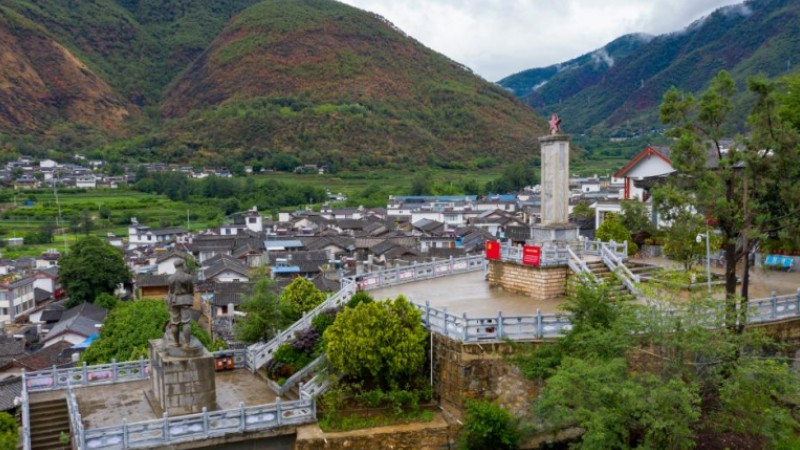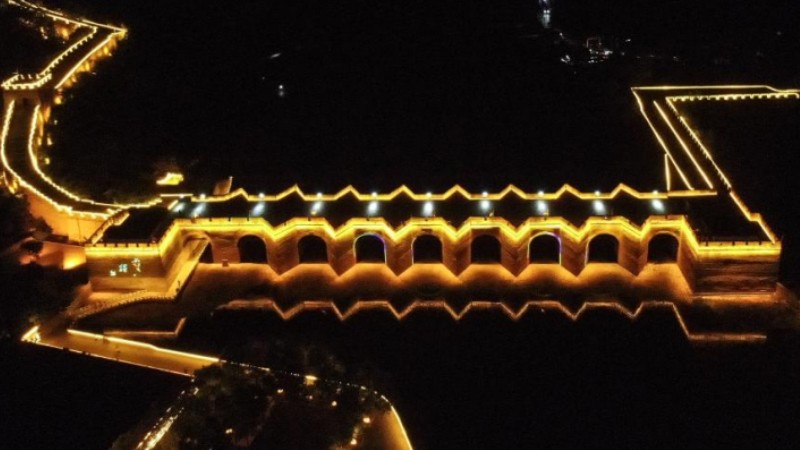"Green Great Wall" safeguards oases in desert
LANZHOU, July 6 (Xinhua) -- Sand is just eight steps away. That was how Babusha, an enormous sand dune on the southern edge of the Tengger Desert, got its name.
"Babu" means eight steps in Chinese, and "sha" literally refers to sand.
Having long been plagued by severe drought, the childhood memory of Guo Wangang, a native of Gulang County in the city of Wuwei, northwest China's Gansu Province, was filled with stifling sandstorms and endless yellow dunes.
Fed up with the invasion of choking sand-dust storms, local residents, in the 1960s, took the plunge and waged a war against desertification, and henceforth a green belt, now dubbed the "Green Great Wall," has gradually been established along the fringe of the desert.
Now Babusha is better known as Babusha Forest Farm, and the once dry and barren land is now covered by vegetation.
The summer in Babusha now is no longer what it was in Guo's memory. Rows of flowers are seen blooming at the eastern end of the Hexi Corridor, and the southern edge of Tengger Desert, and a light wind saturates the air with a burst of faint floral scent. Guo, who now serves as head of the farm, is leading the staff to water a Haloxylon ammodendron forest.
Not far away, a white elm with a crown of more than 10 meters stands proudly as a witness to generations of painstaking effort in sand control.
"The elm was planted in 1978. The sandstorms used to be so powerful that even the roots on the windward side were sticking out," said Guo. "Generations of saplings are like generations of sand fighters taking root in the desert and safeguarding their homes."
In the past decade, the "Great Green Wall" along the 1,200-km line from the Maowusu Desert in the east to the Kumtag Desert in the west has safeguarded the oases in the vast expanses of sandy land.
The Babusha Forest Farm has successively completed sand control and afforestation of over 280,000 mu (about 18,667 hectares) of land, and the transition zone from the oasis to the desert has expanded by 30 km as a whole.
The oasis-desert transition zone is an ecological buffer zone between a mobile desert and an oasis, which is important in reducing the forward mobility of sand dunes and wind and sand hazards in an oasis.
Like Babusha Forest Farm, green miracles have been seen in many other deserts in the country over the decades.
During the 2012-2022 period, China's accumulative afforestation area reached 960 million mu, while 165 million mu of grassland was improved, and more than 12 million mu of wetlands were added or restored, official data showed.
By 2025, China will have a total of 2 million hectares of desertified land sealed off for protection, with more than 6 million hectares of sandy land newly treated and 1.3 million hectares of rocky-desertification land harnessed, according to the National Forestry and Grassland Administration.
In Gansu, which is home to over 12 million hectares of sandy land, these efforts have brought a verdant look to the formerly barren land. Several dried-up lakes have been revived, and the variety of plants and birds has significantly increased.
"Currently, more than 1,200 km of windbreak and sand-fixing forest covering an area of over 4.6 million mu has been built in the northern part of the Hexi Corridor, protecting more than 1,400 villages from sandstorms," said Zhang Xuchen, head of the Gansu Forestry and Grassland Administration.
Photos
Related Stories
- Chasing the green: one man's relentless fight against desertification
- Marine ecological protection and restoration project in Tangshan makes progress
- China mulls establishment of National Ecology Day
- NE China promotes green transformation to achieve ecological and economic benefit
- Relocation ensures better homes for endangered cranes
Copyright © 2023 People's Daily Online. All Rights Reserved.









